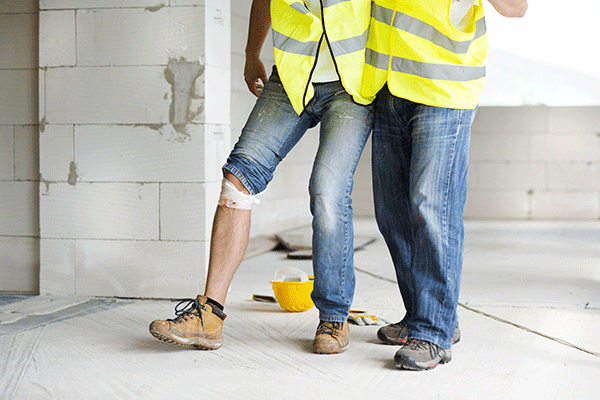While preventing falls should be the number one priority for construction safety managers, they must also acknowledge the reality that falls will occur. No work site is 100 percent hazard-free.
Employees need to know what to do before, during and after a fall. This knowledge is instrumental in ensuring a plan is in place outlining what to do if someone was to be in an accident.
Here is what that plan should look like:
Before: Focus on Recovery
Even though companies abide by U.S. Occupational Safety and Health Administration regulations, falls are sometimes unavoidable. Keeping this in mind, safety managers should develop a recovery plan that may help mitigate the severity of injuries.
According to Peter Burnham, writing for Occupational Health & Safety, it’s important to think about recovery efforts before accidents occur. Doing so will help create a fast and efficient recovery process.
Safety personnel should know the following information:
- Where recovery gear is located
- What other employees should do after an accident
- How to conduct a recovery
- Where to take someone with non-life-threatening injuries
Additionally, safety managers should think about having employees carry automatic fall detection devices. These can help track lone wolf workers and make it easier to find them if they fall. A buddy system may also be implemented to increase awareness and keep tabs on employees.
Safety managers who are aware of their work sites will then have an easier time handling the next step.
During: Discovery
Quickly finding an employee who fell becomes priority number one.
Once an employee is found, it’s important everyone involved in the rescue process is on their “A” game, Burnham stated. They should know where medical equipment and necessary supplies, like ladders, are located.
That equipment should be kept near a worksite and ready to use. Discovery efforts should emphasize speed because any wasted minutes can jeopardize an employee’s life, even if the fall wasn’t life-threatening at first.
After: Provide Medical Attention
An injured employee needs to receive immediate medical attention once he or she is recovered. Medical kits should contain supplies to meet all types of injuries, from cuts and bruises to more serious lacerations or broken bones.
Employees who suffered serious but non life-threatening injuries will then need to be transported to the nearest emergency room, urgent care center or walk-in clinic by fellow workers.
Preventing falls is on the mind of every safety manager in the construction industry. Following OSHA guidelines and providing protection equipment help lower the odds of an incident. However, accidents will still happen. But by developing recovery plans ahead of time, safety personnel can ensure a strong recovery guideline is in place.
Read more:
Best Practices to Ensure Ladder Safety
After A Serious Workplace Incident, Don’t Forget to Help the Witnesses
Talk About Safety: There is Never a Bad Time
OSHA Highlights Fall Prevention
Linemen: Safety is Everything
Preventing Slips and Falls – Consider Cleats
E-commerce offerings:
(Contact a Customer Service Representative for additional selections, options, and solutions)
Fall Protection
First Aid
Signaling
Lineman Tools
Ladders
Harnesses
Heat Stress
Call and let us help meet all of your supply needs (866-483-7289).
Did you know that any customer is eligible for online ordering? All you need to do is fill out this online form.
Key benefits include:
- Order anytime, 24/7, 365 days a year. If you can connect, you can place an order.
- Create order templates, aka “My Lists.” Reduce search time, click, order, done.
- Track purchase history and view your account information. You can review invoices any time, track purchase history, and print or download records.
